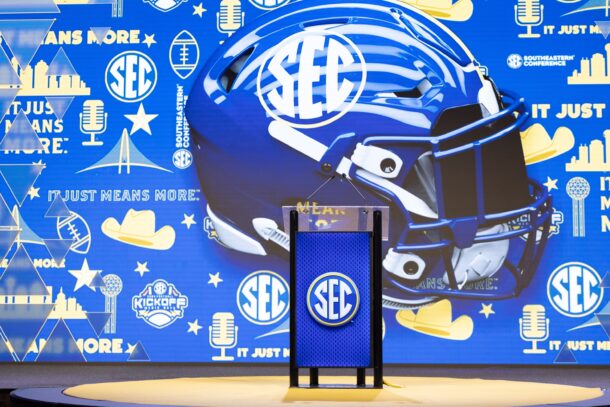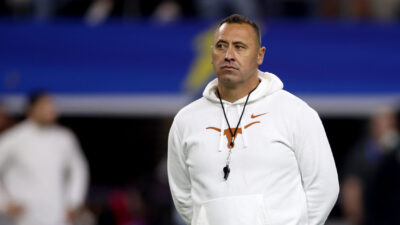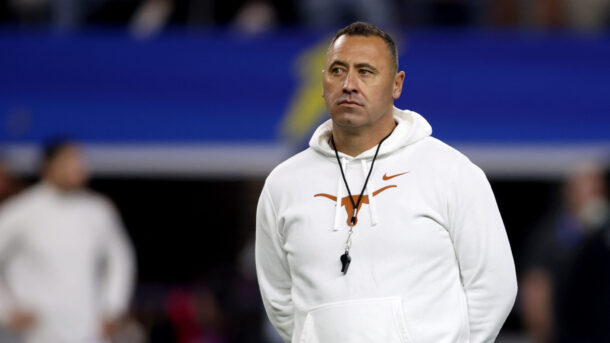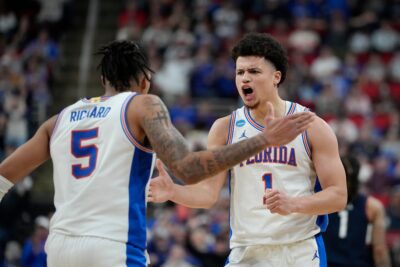Ad Disclosure
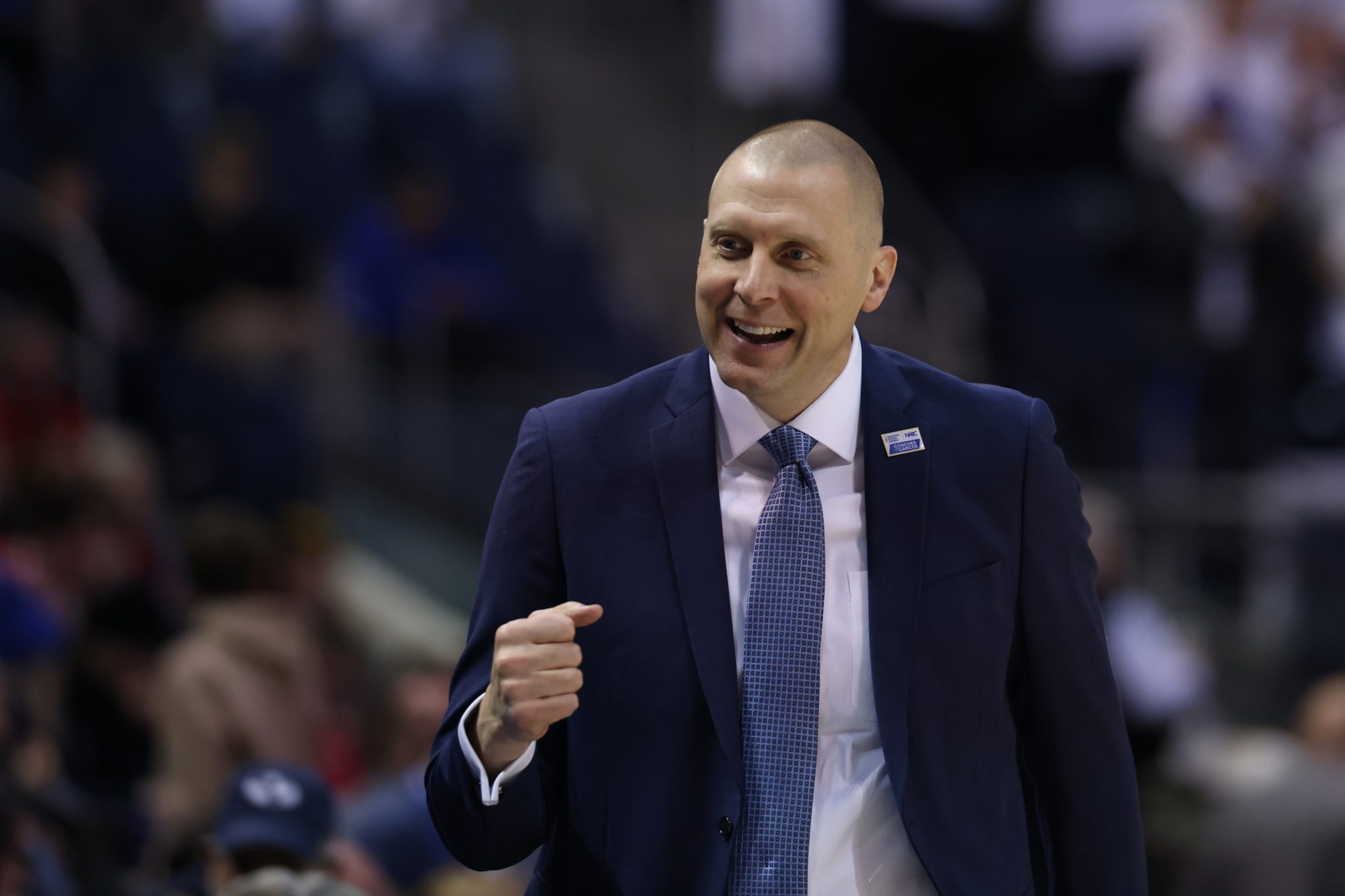
The 6 biggest (and best) changes in Kentucky basketball under Mark Pope
By Joe Cox
Published:
After his first month of actual games, Kentucky coach Mark Pope has fared about as well as possible. The No. 8 Wildcats (who will likely move up a few spots when the weekly poll is unveiled) are 7-0 and have been a breath of fresh air. Admittedly, Kentucky has been a massive favorite in every game save their mild upset of Duke. But more than wins and losses, Pope has succeeded in bringing something new and different to Kentucky basketball.
Here’s a rundown on what exactly is new and why it feels so refreshing.
1. Not so fresh
After a decade-plus of severe dependency on 1-and-done freshmen under John Calipari, that’s not a situation for Kentucky under Pope. A season ago, Kentucky struggled through horrific inconsistency with highly regarded freshmen, including DJ Wagner (40.5% shooter, 29.2% from 3-point range), Justin Edwards (a starting guard with 30 total assists on the season) and Aaron Bradshaw (4.9 ppg, 7 total assists all season).
This year, the freshman seeing the most minutes is Collin Chandler, who averages just under 10 minutes and 3 points per game. Freshmen make up less than 5% of Kentucky’s scoring this season.
Sure, Reed Sheppard and Rob Dillingham aren’t wearing the blue and white this year, but the Wildcats also aren’t hamstrung waiting on highly-touted recruits to learn to play college basketball.
2. Salt of the (transfer portal) Earth
On the other hand, Calipari’s final team did lean heavily on 2 veteran transfers, former Illinois State guard Antonio Reeves and West Virginia big man Tre Mitchell. That’s the template that Pope follows. All 9 of Pope’s primary players are transfers. Of the 9, only Oklahoma State big man Brandon Garrison hasn’t played multiple seasons of college basketball. On one hand, that makes sense, considering Pope played 2 seasons for Washington before transferring to Kentucky and helping the Wildcats win the 1996 NCAA Tournament. Pope averaged 20 minutes and 7.6 for that team, too.
Pope didn’t exactly just mine top flight college basketball environs, either. He’s using recruits nabbed from Drexel, Fairleigh Dickinson and Dayton, among some usual suspects of power conferences. For 3 of those top 9 players, Kentucky isn’t even their second college basketball stop.
Accordingly, Pope landed a team of veteran and yet often hungry players — guys who have been solid individual players, but who haven’t seen a ton of NCAA Tournament success. It’ll be interesting to see how that mixes with the inevitable handful of top freshmen who will join future classes. But for now, a group of guys who have been far from the radar of big-time college basketball are leading Kentucky.
3. No single leader
Calipari’s teams generally had a main player who could be counted on to take big shots in close games. A year ago, it was primarily Reeves, even though Sheppard and Dillingham went on to be NBA Draft lottery picks. This team doesn’t seem to have a single standout. Oklahoma transfer guard Otega Oweh is the leading scorer (15.9 ppg), Dayton transfer Koby Brea is the pure shooter (14.1 ppg, 61% 3-point shooting), BYU transfer Jaxson Robinson, a 6-7 wing, might be the best athlete (12.0 ppg).
But then, San Diego State transfer Lamont Butler (12.4 ppg is the primary ballhandler) and Wake Forest exile Andrew Carr (10.7 ppg) made many of the biggest plays late in the game against Duke. Instead of a single defined star, Kentucky offers a group of possible stars.
4. Even more 3-point shooting
A season ago, Calipari vowed to implement more 3-point shooting. Kentucky did lead the nation, shooting 40.9% from 3-point range. But Pope has upped the ante. The Wildcats have gone from 24.2 3-point attempts per game under Calipari to 29.1 3-point attempts per game under Pope, while still shooting 38.2%. Pope’s Wildcats are making 11.1 3s per game and are on pace to break the school’s 3-point marks this season.
5. Better late-game execution
The commonly-cited complaint under Calipari was that the Hall of Fame coach seemed to basically recruit stars … and roll the ball out and let them play. While Pope has only had 1 genuine strategic battle in the young season to date, he passed that test with flying colors. In a bit of internal video that has since gone viral, Pope was in the Kentucky defensive huddle not only discussing how to defend Duke star Cooper Flagg, but identifying the exact move Flagg would use and how he wanted his players to respond. When Oweh played the situation exactly as Pope advised, he found himself the late-game hero.
A year ago, Kentucky was 5-6 in games decided by 2 possessions. While Pope is just 1-0, there’s reason to think his positive start won’t be an isolate incident.
6. The big picture has shifted
December will be more challenging for Kentucky than November. In fact, with road tests this week against Clemson and Gonzaga, a first loss is almost likely for the Wildcats. But while bumps in the road will come sooner or later, Pope has used his first month of games to set a new environment and culture.
The semi-unknown veteran transfers have passed their first tests in looking like a smooth and collaborative team instead of a group of guys plodding out a few months ahead of the NBA Draft Combine. The inside players in particular are a bit suspect, but when difficulty comes, Kentucky now is operating under a framework of possibility rather than recent frustration.
Joe Cox is a columnist for Saturday Down South. He has also written or assisted in writing five books, and his most recent, Almost Perfect (a study of baseball pitchers’ near-miss attempts at perfect games), is available on Amazon or at many local bookstores.
